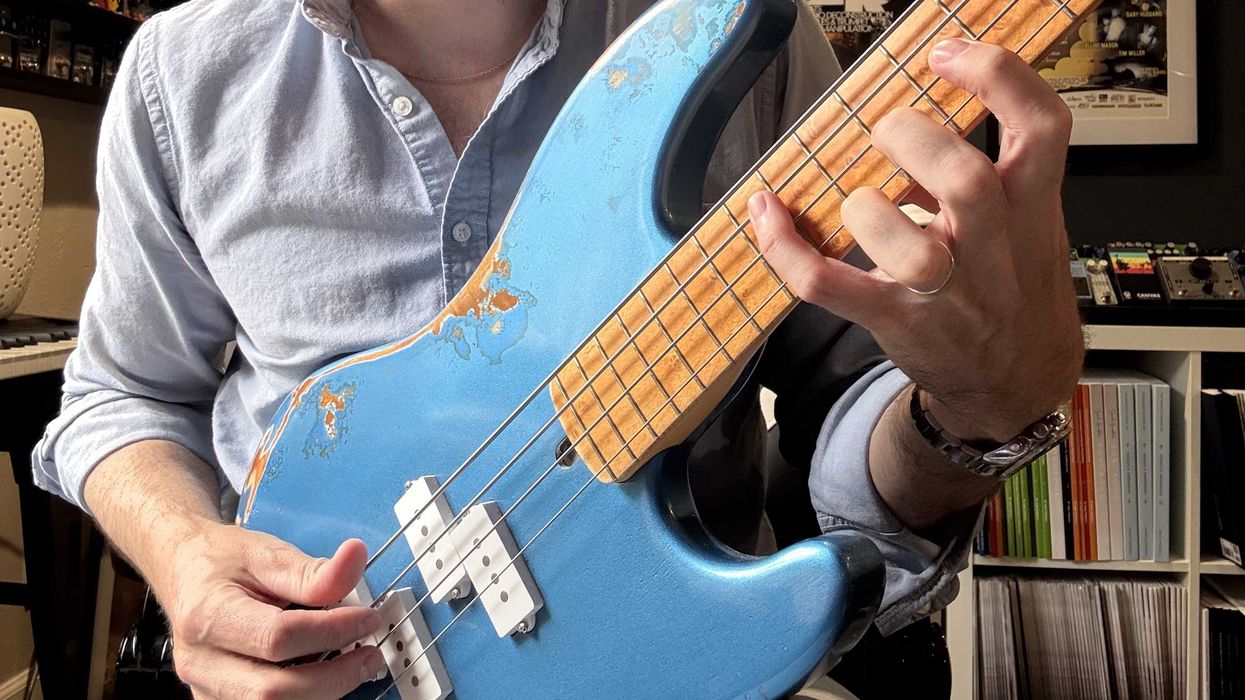Recently at Premier Guitar, we received an email from an aspiring performing guitarist named Elliot Jones that I’d like to share with you.
Can you get Pete to do an article on getting over stage fright? I play for my own enjoyment and can play in front of family and friends, but I’ve never been on a stage in front of a crowd. I get so dang nervous—like a deer in the headlights! I just don’t think I can do it. I’m not getting any younger and I would like to be heard, because my family and close friends think I play pretty well. How do I get over this major mental block? Tips from you guys or major artists would be helpful, or even some perspective on if they still get nervous. Thanks for listening!
Signed,
A legend in my own mind—Elliot Jones
You’re certainly not alone out there, Elliot! This isn’t the first mail we’ve received about this, and musicians at all levels experience performance anxiety. It’s certainly something I’ve had to deal with and that’s why I thought it’d be a great topic to address here.
Preparation. I’ve said it before and I’ll say it again: There is no substitute for being prepared. Many times, I think anxiety and stage fright is simply the result of lack of preparation. If you can play a song sitting down, standing up, while running around, or making rock faces in a mirror, then chances are that you’ll be able to play it in front of people.
I’m a huge proponent of playing through songs the exact same way when practicing as I will be when performing them live. That means I like to play standing up and going through my full rig with the sounds I’ll be using live. If there’s singing involved, I’ll sometimes set up a small PA and mic, and actually practice performing the song. I’ve even rented a rehearsal studio prior to an audition so I can practice playing and singing at a realistic stage volume. Do everything you can to increase your comfort level with the music, and decrease the variables that could potentially throw you off.
The audience is with you. It’s easy to forget when you’re looking out at a sea of faces, but remind yourself that the audience is on your side and doesn’t expect perfection. They’re there to have a good time—not to be critical or overly analytic of your performance. What they do expect is confidence, even in the face of adversity. So if you have a mishap, dealing with it with humor and grace can actually make the show better and more interesting than if it had been a flawless performance.
I’ve seen Keith Richards screw up the intro to “Brown Sugar” in front of 60,000 people and just laugh and shrug it off. I’ve seen Rudolf Schenker strap on a Flying V in front of an arena crowd and hammer out the intro chords to “Rock You Like A Hurricane,” completely out of tune. He just made a funny face, laughed, got another guitar, and carried on. These things happen, and the show must go on. The stage won’t fall down, the rest of the band has your back, and the audience usually barely notices.
Positive role models. Before solos and parts where I know I’m featured, I’ll sometimes say things to myself like, “lean into it” or “now’s not the time to suck!” I try to keep my internal monologue focused on positive thoughts that will benefit my performance. If I sense anxiety rearing its ugly head while I’m performing, I’ll think about musicians I admire that project confidence and fearlessness onstage, and try to channel their attitude into my performance.
Think about some of your own guitar heroes and musical idols, and try to incorporate their vibe and mannerisms into your own performance. Actively thinking about these things when you are feeling anxious will steer your mind in the right direction and can help make you more comfortable onstage.
Back in 2004, I was touring with Draco Cornelius Rosa. Draco is an amazing artist, confident performer, and very popular in Latin America. That year we closed the Rock al Parque festival for 140,000 people in Bogotá, Colombia. It was an incredible experience and the biggest gig I’ve ever played. Walking onstage in front of a crowd like that (with no real soundcheck and using rental gear) can be a nerve-racking and daunting experience. But Draco is a master performer, and he knew just how to ease us into the gig.
As we were about to start the first song, we realized Draco was playing something on his guitar that we’d never heard. He was coming up with a riff on the spot and just jamming—leaving all of us somewhat puzzled. But we all ended up joining in, jammed freely for three or four minutes, and got comfortable with our gear and the sound of the stage before starting the first song of the set. It was a brilliant way to throw us off guard a bit and force us to be creative and get comfortable. The spontaneous jam created the mood for the whole set, and my memory of the vibe of the gig is that it felt more like a comfortable and spontaneous club show, not an arena concert for thousands of people.
If you ever suffer from performance anxiety, I hope these tips will help you ease your fears and get on with making music. Just remember: It’s supposed to be fun!














